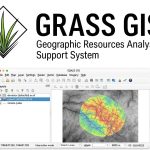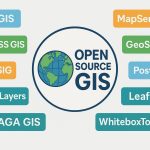Accessing the SAS/GIS Tutorial
What is SAS GIS?
SAS stands for Statistical Analysis System. SAS/GIS software provides an interactive Geographic Information System.
It also enables you to do more than simply view your spatial data and interact with the data by selecting features and performing actions that are based on your selections.
SAS/GIS software draws on the capabilities of SAS and enables you to access, manage, analyze, and present your data easily
Features of SAS Software
SAS is a powerful programming language software with components called procedures.
Procedures enable you to perform many types of analysis and data management functions and also produce different types of text-based and graphical presentation output.
The SAS language and its procedures make an immense variety of applications, including the following examples:
- Analyze data using descriptive statistics, multivariate techniques, forecasting and modeling, and linear programming.
- Manage data using tools for data entry, editing, retrieval, formatting, and conversion.
- Present data using reports and business and statistical graphics.
SAS Data Types
SAS/GIS software uses two basic types of data:
Spatial Data
Three types of layers can be represented in SAS maps: points, lines, and polygon (areas). These are examples:
- The collection of all the points in a map that represent station locations can be organized into a points layer for stations.
- The collection of all the lines in a map that represent streets can be organized into a line layer for streets.
- The collection of all the areas that represent any land use can be organized into an for land cover.
Attribute Data
You can define the following actions for your attribute data:
- Display observations from attribute data sets that relate to selected map features.
- Open additional maps that relate to selected map features.
- Interactively subset attributes data sets according to a subset of selected map features.
- Submit and Issue SAS programs.
- Organize area features into groups that are based on your attribute data.
How to Use SAS/GIS Software
Use the following steps to start a SAS software:
- Open a SAS session.
- From the SAS menu bar, select Solutions > Analysis > Geographic Information System.
Selecting Maps and SAS Data Sets
Whenever you need to specify the name of a SAS Data set or SAS catalog entry.
The SAS catalog window provides an intuitive way to find the SAS data, that you need. It also makes it impossible to enter an invalid name, because only those choices that are appropriate for the operation that you are performing are presented for selection.
To select each level of the SAS name from the tree view, double-click your choice. Once you make a selection, the list of available choices for the next level of the name is displayed.
Accessing the SAS/GIS Project
To start the project, make the following selections from the GIS Map window’s menu bar:
Help > Getting Started with SAS/GIS Software > Begin Tutorial.



